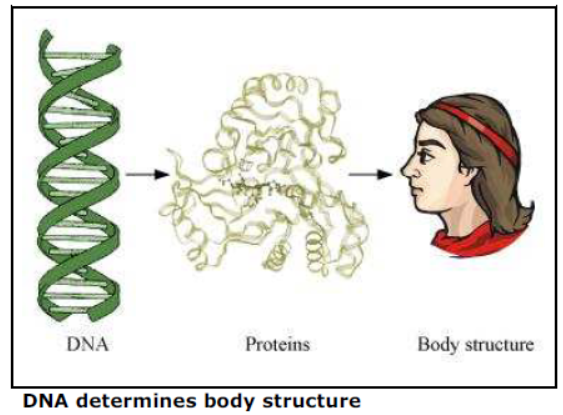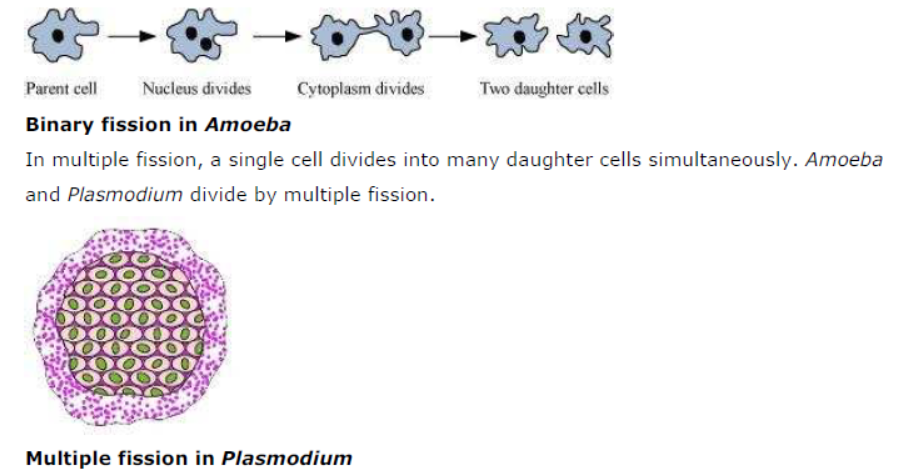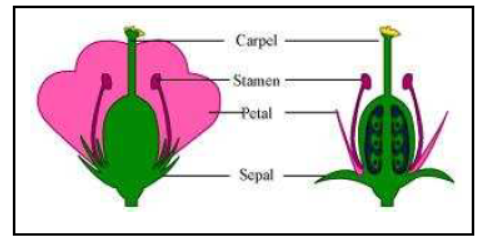NCERT Solutions Class 10 Science Chapter 8 How do Organisms Reproduce have been provided below and is also available in Pdf for free download. The NCERT solutions for Class 10 Science have been prepared as per the latest syllabus, NCERT books and examination pattern suggested in Class 10 by CBSE, NCERT and KVS. Questions given in NCERT book for Class 10 Science are an important part of exams for Class 10 Science and if answered properly can help you to get higher marks. Refer to more Chapter-wise answers for NCERT Class 10 Science and also download more latest study material for all subjects. Chapter 8 How do Organisms Reproduce is an important topic in Class 10, please refer to answers provided below to help you score better in exams
Chapter 8 How do Organisms Reproduce Class 10 Science NCERT Solutions
Class 10 Science students should refer to the following NCERT questions with answers for Chapter 8 How do Organisms Reproduce in Class 10. These NCERT Solutions with answers for Class 10 Science will come in exams and help you to score good marks
Chapter 8 How do Organisms Reproduce NCERT Solutions Class 10 Science
Question : What is the importance of DNA copying in reproduction?
Answer: DNA (Deoxyribonucleic acid) is the genetic material found in the chromosomes, which are present in the nucleus of a cell. The DNA is the information site for making proteins and each specific type of protein leads to a specific type of body design.
Thus, it is the DNA molecule that determines the body design of an individual. Therefore, it can be concluded that it is the DNA that gets transferred from parents to offsprings and makes them look similar.

Question : Why is variation beneficial to the species but not necessarily for the individual?
Answer: Variations are beneficial to the species than individual because sometimes for a species, the environmental conditions change so drastically that their survival becomes difficult.For example, if the temperature of water increases suddenly, then most of the bacteria living in that water would die. Only few variants that are resistant to heat would be able to survive. However, if these variants were not there, then the entire species of bacteria would have been destroyed. Thus, these variants help in the survival of the species.
However, all variations are not necessarily beneficial for the individual organisms.
Question : How does binary fission differ from multiple fission?
Answer:
In binary fission, a single cell divides into two equal halves. Amoeba and Bacteria divide by binary fission.

Question : How will an organism be benefited if it reproduces through spores?
Answer: There are many advantages, if an organism reproduces through spores.
Advantages of spore formation:
· Large numbers of spores are produced in one sporangium.
· Spores are distributed easily by air to far-off places to avoid competition at one place.
· Spores are covered by thick walls to prevent dehydration under unfavourable conditions.
Question : Can you think of reasons why more complex organisms cannot give rise to new individuals through regeneration?
Answer: Simple organisms such as Hydra and Planaria are capable of producing new individuals through the process of regeneration. The process of regeneration involves the formation of new organisms from its body parts. Simple organisms can utilize this method of reproduction as their entire body is made of similar kind of cells in which any part of their body can be formed by growth and development.
However, complex organisms have organ-system level of organization. All the organ systems of their body work together as an interconnected unit. They can regenerate their lost body parts such as skin, muscles, blood, etc. However, they cannot give rise to new individuals through regeneration.
Question : Which of the following is a plant hormone?
(a) Insulin
(b) Thyroxin
(c) Oestrogen
(d) Cytokinin
Answer: (d) Cytokinin is a plant hormone.
Question : Why is DNA copying an essential part of the process of reproduction?
Answer: DNA (Deoxyribonucleic acid) copying is an essential part of reproduction as it passes genetic information from parents to offspring. It determines the body design of an
individual. The reproducing cells produce a copy of their DNA through some chemical reactions and result in two copies of DNA. The copying of DNA always takes place along with the creation of additional cellular structure. This process is then followed by division of a cell to form two cells.
Question : How is the process of pollination different from fertilization?
Answer: Pollination is the process of transfer of pollens from anther to stigma. It occurs with the help of certain pollinators such as air, water, birds, or some insects.
Fertilization, on the other hand, is the fusion of the male and female gametes. It occurs inside the ovule and leads to the formation of zygote.
Question : What is the role of the seminal vesicles and the prostate gland?
Answer: The secretions from seminal vesicles and prostate glands lubricate the sperms and provide a fluid medium for easy transport of sperms. Their secretion also provides nutrient in the form of fructose, calcium, and some enzymes.
Question : What are the changes seen in girls at the time of puberty?
Answer: Secondary sexual characteristics in girls:
· Increase in breast size and darkening of skin of the nipples present at the tips of the breasts.
· Appearance of hair in the genital area.
· Appearance of hair in other areas of skin like underarms, face, hands, and legs.
· Increase in the size of uterus and ovary.
· Beginning of menstrual cycle.
· More secretion of oil from the skin, which results in the appearance of pimples.
Question : How does the embryo get nourishment inside the mother’s body?
Answer: The embryo develops inside the mother’s body for about nine months. Inside the uterus, the outer tissue surrounding the embryo develops finger-like projections called villi.These villi are surrounded by uterine tissue and maternal blood. They provide a large surface area for exchange of oxygen and nutrients. Also, there is a special tissue called placenta, which is embedded in the uterine wall. The embryo receives the oxygen and nutrients from the mother’s blood via the placenta. The waste materials produced by the
embryo are also removed through the placenta.
Question : If a woman is using a copper−T, will it help in protecting her from sexually transmitted diseases?
Answer: No. Using a copper-T will not provide a protection from sexually transmitted diseases, as it does not prevent the entry of semen. It only prevents the implantation of the embryo in the uterus.
Question : Asexual reproduction takes place through budding in
(a) amoeba.
(b) yeast.
(c) plasmodium.
(d) leishmania.
Answer: (b) Asexual reproduction takes place through budding in yeast.
Question : Which of the following is not a part of the female reproductive system in human beings?
(a) Ovary
(b) Uterus
(c) Vas deferens
(d) Fallopian tube
Answer: (c) Vas deferens is not a part of the female reproductive system in human beings.
Question : The anther contains
(a) sepals.
(b) ovules.
(c) carpel.
(d) pollen grains.
Answer: (d) The anther contains pollen grains.
Question : What are the advantages of sexual reproduction over asexual reproduction?
Answer: Advantages of sexual reproduction:
· In sexual reproduction, more variations are produced. Thus, it ensures survival of species in a population.
· The new formed individual has characteristics of both the parents.
Variations are more viable in sexual mode than in asexual one. This is because in asexual reproduction, DNA has to function inside the inherited cellular apparatus.
Question : What are the functions performed by the testis in human beings?
Answer: The testes are the male reproductive organs that are located outside the abdominal cavity within a pouch called scrotum.
Functions of testes:
· Produce sperms
· Produce a hormone called testosterone, which brings about secondary sexual characters in boys.
Question : Why does menstruation occur?
Answer: Menstruation is a process in which blood and mucous flows out every month through the vagina. This process occurs every month because one egg is released from the ovary every month and at the same time, the uterus (womb) prepares itself to receive the fertilized egg. Thus, the inner lining of the uterus gets thickened and is supplied with blood to nourish the embryo. If the egg does not get fertilised, then the lining of the uterus breaks down slowly and gets released in the form of blood and mucous from the vagina.
Question : Draw a labelled diagram of the longitudinal section of a flower.
Answer:

Question : What are the different methods of contraception?
Answer:
The contraceptive methods can be broadly divided into the following types:
· Natural method→ It involves avoiding the chances of meeting of sperms and ovum. In this method, the sexual act is avoided from day 10th to 17th of the menstrual cycle because during this period, ovulation is expected and therefore, the chances of fertilization are very high.
· Barrier method → In this method, the fertilization of ovum and sperm is prevented with the help of barriers. Barriers are available for both males and females. Condoms are barriers made of thin rubber that are used to cover penis in males and vagina in females.
· Oral contraceptives →In this method, tablets or drugs are taken orally. These contain small doses of hormones that prevent the release of eggs and thus fertilization cannot occur.
· Implants and surgical methods →Contraceptive devices such as the loop or Copper-T are placed in uterus to prevent pregnancy. Some surgical methods can also be used to block the gamete transfer. It includes the blocking of vas deferens to prevent the transfer of sperms known as vasectomy. Similarly, fallopian tubes of the female can be blocked so that the egg will not reach the uterus known as tubectomy.
Question : How are the modes for reproduction different in unicellular and multicellular organisms?
Answer: In unicellular organisms, reproduction occurs by the division of the entire cell. The modes of reproduction in unicellular organisms can be fission, budding, etc. whereas in
multicellular organisms, specialised reproductive organs are present. Therefore, they can reproduce by complex reproductive methods such as vegetative propagation, spore
formation, etc. In more complex multicellular organisms such as human beings and plants, the mode of reproduction is sexual reproduction.
Question : How does reproduction help in providing stability to populations of species?
Answer: Living organisms reproduce for the continuation of a particular species. It helps in providing stability to the population of species by producing a new individual that resembles the parents. This is the reason why cats give birth to only cats or dogs give birth to only dogs. Therefore, reproduction provides stability to populations of dogs or cats or any other species.
Question : What could be the reasons for adopting contraceptive methods?
Answer: Contraceptive methods are mainly adopted because of the following reasons:
(i) To prevent unwanted pregnancies.
(ii) To control population rise or birth rate.
(iii) To prevent the transfer of sexually transmitted diseases.
| NCERT Solutions Class 10 Science Chapter 1 Chemical Reactions and Equations |
| NCERT Solutions Class 10 Science Chapter 2 Acids Bases and Salts |
| NCERT Solutions Class 10 Science Chapter 3 Metals and Non metals |
| NCERT Solutions Class 10 Science Chapter 4 Carbon and its Compounds |
| NCERT Solutions Class 10 Science Chapter 5 Periodic Classification of Elements |
| NCERT Solutions Class 10 Science Chapter 6 Life Processes |
| NCERT Solutions Class 10 Science Chapter 7 Control and Coordination |
| NCERT Solutions Class 10 Science Chapter 8 How do Organisms Reproduce |
| NCERT Solutions Class 10 Science Chapter 9 Heredity and Evolution |
| NCERT Solutions Class 10 Science Chapter 10 Light Reflection and Refraction |
| NCERT Solutions Class 10 Science Chapter 11 Human Eye and Colourful World |
| NCERT Solutions Class 10 Science Chapter 12 Electricity |
| NCERT Solutions Class 10 Science Chapter 13 Magnetic Effects of Electric current |
| NCERT Solutions Class 10 Science Chapter 14 Sources of Energy |
| NCERT Solutions Class 10 Science Chapter 15 Our Environment |
| NCERT Solutions Class 10 Science Chapter 16 Management of Natural Resources |
NCERT Solutions Class 10 Science Chapter 8 How do Organisms Reproduce
The above provided NCERT Solutions Class 10 Science Chapter 8 How do Organisms Reproduce is available on our website www.studiestoday.com for free download in Pdf. You can read the solutions to all questions given in your Class 10 Science textbook online or you can easily download them in pdf. The answers to each question in Chapter 8 How do Organisms Reproduce of Science Class 10 has been designed based on the latest syllabus released for the current year. We have also provided detailed explanations for all difficult topics in Chapter 8 How do Organisms Reproduce Class 10 chapter of Science so that it can be easier for students to understand all answers. These solutions of Chapter 8 How do Organisms Reproduce NCERT Questions given in your textbook for Class 10 Science have been designed to help students understand the difficult topics of Science in an easy manner. These will also help to build a strong foundation in the Science. There is a combination of theoretical and practical questions relating to all chapters in Science to check the overall learning of the students of Class 10.
You can download the NCERT Solutions for Class 10 Science Chapter 8 How do Organisms Reproduce for latest session from StudiesToday.com
Yes, the NCERT Solutions issued for Class 10 Science Chapter 8 How do Organisms Reproduce have been made available here for latest academic session
Regular revision of NCERT Solutions given on studiestoday for Class 10 subject Science Chapter 8 How do Organisms Reproduce can help you to score better marks in exams
Yes, studiestoday.com provides all latest NCERT Chapter 8 How do Organisms Reproduce Class 10 Science solutions based on the latest books for the current academic session
Yes, NCERT solutions for Class 10 Chapter 8 How do Organisms Reproduce Science are available in multiple languages, including English, Hindi
All questions given in the end of the chapter Chapter 8 How do Organisms Reproduce have been answered by our teachers

